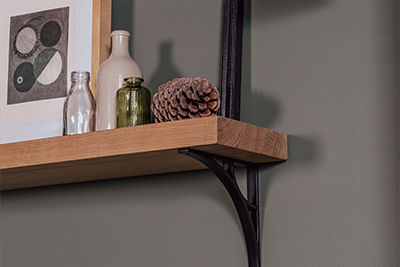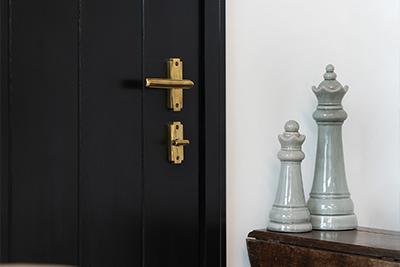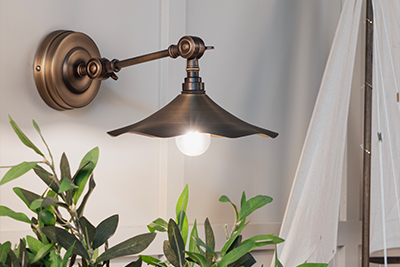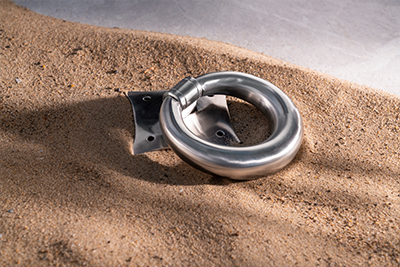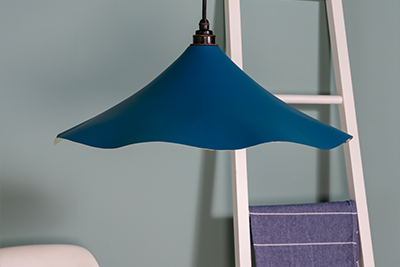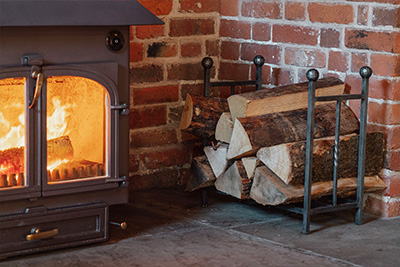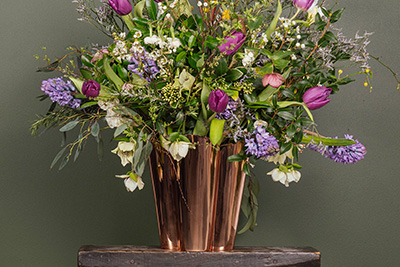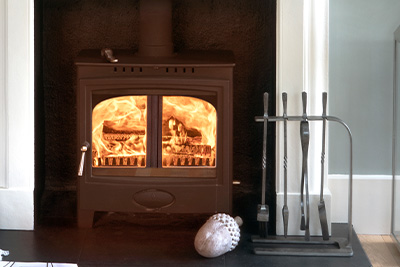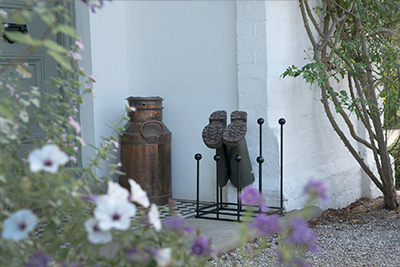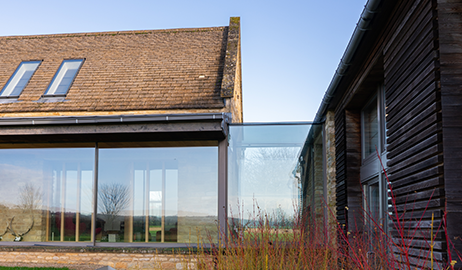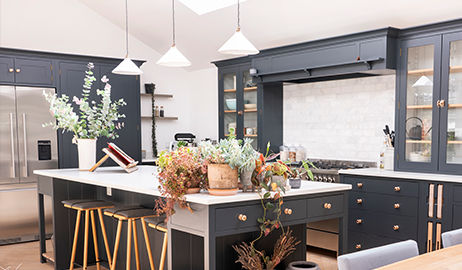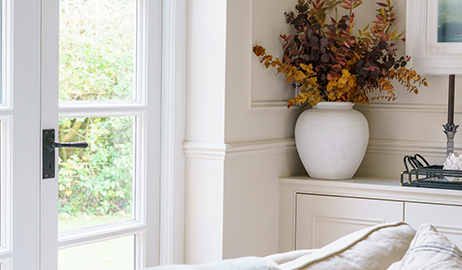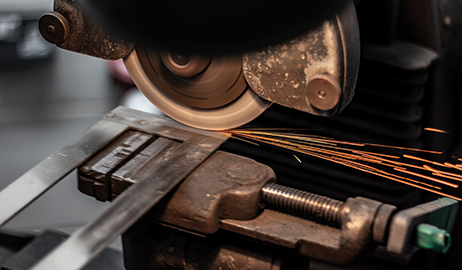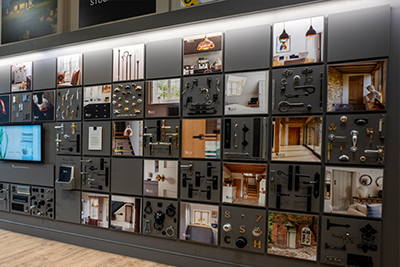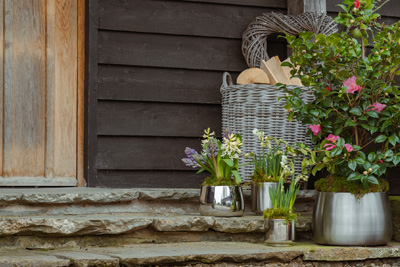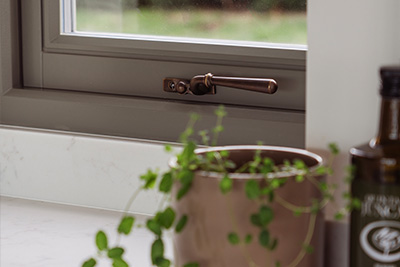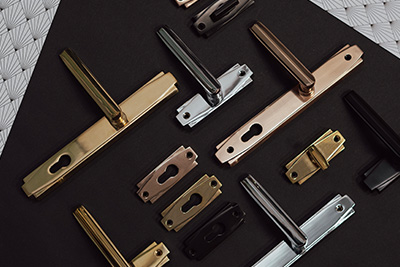- FAQ
- Lever Handles
Lever Handles
Are your lever handles sprung or unsprung?
Do I need a left or right-handed door handle?
Many of our handles are left- or right-handed. This affects how the handle interacts with the locking mechanism. To determine which hand you need, stand on the side of your door where it closes towards you. If the hinges are on the right side, you’ll need a right-handed handle (or left-handed if they're on the left side). Some handles aren't handed e.g. pull handles because they operate independently to the lock. These are suitable for both left & right-hinged doors.
Can I buy one handle with a keyhole and one handle with a blank back plate as a set?
For items we don’t carry in stock, or for a large quantity of handles, we can have these sets made bespoke.
Otherwise, we can split a couple of standard product sets to meet your requirements – this is not something we advertise as we don’t want to end up with piles of unwanted half-sets in stock.
Please contact us for more details.
What is a Lever on Rose handle?
A Lever on Rose can be used on its own as a latch for internal doors that don't need to be locked. It can also be used in conjunction with various locks from sash lock for your front or back door, euro locks for things like patio doors and with thumbturns for use on your bathroom door. A very versatile product and if used with other products usually you will need to purchase some type of escutcheon or turn.
What is a Lever Lock handle?
Lever Lock handles are handles which have a keyhole cut out of their backplate. They are used to operate doors fitted with a traditional sash lock. Therefore, they're used on doors that require locking.
What is a Lever Latch handle?
A Lever Latch handle is one that's used with a mortice latch. When the handle is pushed down, it turns a spindle which passes through the door and shifts the mortice latch, allowing the door to open. This type of handle is used on internal doors that don't require locking.
What is a Lever Bathroom handle?
Bathroom Lever Handles have a fixed thumbturn which operates a bathroom mortice lock. This allows the door to be locked from the inside but can also be opened from the outside during an emergency.
What is a Lever Euro Lock handle?
Lever Euro Lock handles have a large Euro profile keyhole cut out of their backplate. They're used to operate doors fitted with a Euro sash lock. They're ideal for patio doors where extra security is required, and can also be paired with a latch version on double patio doors for balance.
What's an espagnolette lever handle?
Espagnolette (espag) handles are used to operate espag locks. These locks are mostly used within the vertical frames of French doors and in modern windows. They consist of a long metal rod with hooks at the top and bottom, which are used to lock the door/window. Because they lock at multiple points along the frame, they are considered more secure than other locking systems. Espag handles operate the mechanism and allow for an upward locking movement.
What's the difference between sprung and unsprung handles?
‘Sprung’ means a door handle/knob has a spring in the backplate or rose which returns the handle to its original position when released.
‘Unsprung’ handles/knobs don't contain this spring. Instead, they use the door lock to return to their original position. Unsprung handles are often used in conjunction with a multi-point lock where the handle needs to travel in both directions (up to engage the lock & down to operate the latch).
What are my handles supplied with and how do they work?
Our lever handles are supplied with fixing screws to attach the handle to the door & a spindle which passes through the lock/latch in the door and fits into the handles on either side. When one of the levers is pulled down the spindle operates the lock/latch and the handle on the other side of the door, allowing it to open. Locks/latches must be purchased separately. Without a lock/latch, there'll be nothing to pass the spindle through & the handles will be useless.
What to do if my lever doesn’t return to the horizontal position?
If your lever handle doesn’t spring back to its original, horizontal position, it usually means the spring in your lock/latch isn’t strong enough. This can be easily fixed by replacing the lock/latch for a heavy-duty version or fitting a spring unit cassette over the spindle and behind the lever to increase the strength of return.
Do your handles work with extra thick doors?
Yes, but you'll need to purchase a longer spindle to connect the two door handles. If the spindle you purchase is longer than the thickness of your door, it can easily be cut down to size to perfectly fit your door.
1
Categories:



